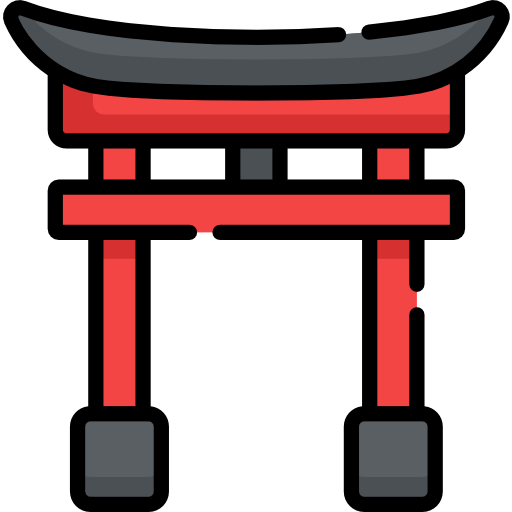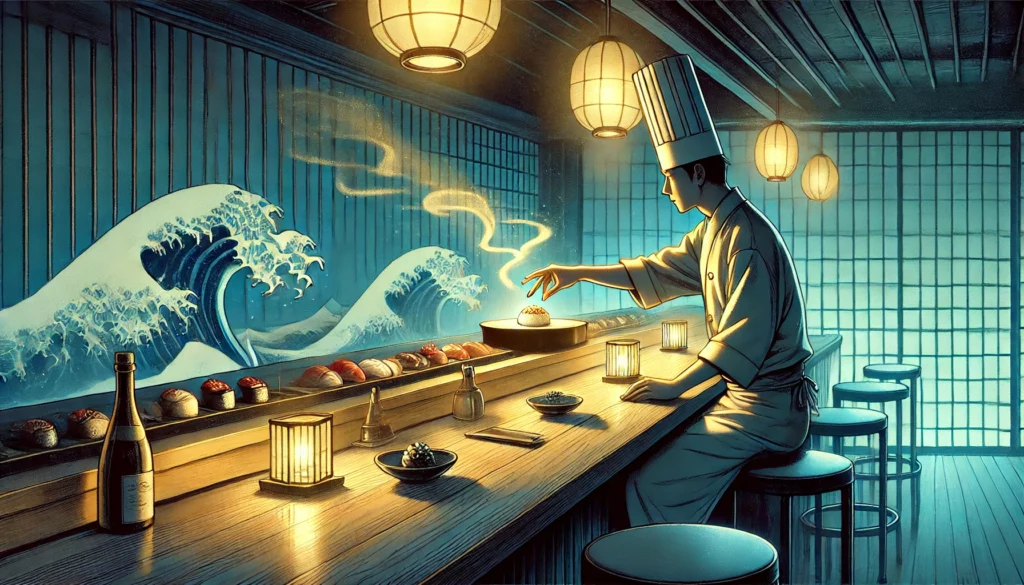Have you ever wanted to experience the pinnacle of Japanese culinary artistry without having to make a single menu decision? Omakase dining offers exactly that—a curated journey through the finest seasonal ingredients, prepared with masterful technique and presented with artistic precision, all selected at the chef’s discretion.
The word “omakase” (お任せ) literally translates to “I leave it up to you,” encapsulating the essence of this distinctive dining style where guests entrust their entire meal to the expertise of the chef. With over 500,000 monthly searches in the United States alone, omakase has captured the imagination of American diners seeking authentic Japanese culinary experiences beyond the familiar territory of sushi rolls and teriyaki.
In this guide, we’ll explore what truly makes an omakase experience special, how to get the most from your first time, what to expect regarding cost and etiquette, and why this Japanese tradition has become a global phenomenon for food enthusiasts.
Want to explore Japan’s culture?
Discover Japan’s rich culture, traditions, and hidden gems with our expertly crafted guides. Get insider tips on travel, food, and history. All for free!
What is Omakase? Understanding the Tradition
At its core, omakase represents a philosophy as much as a meal format. When you order omakase at a Japanese restaurant, you’re not just selecting a tasting menu—you’re expressing trust in the chef’s judgment, seasonal awareness, and ability to craft a cohesive culinary narrative.
Origins and Evolution
The omakase tradition emerged from Japan’s sushi culture, where itamae (sushi chefs) would serve customers directly at the counter, gauging reactions and adjusting subsequent offerings accordingly. This intimate chef-guest relationship remains central to authentic omakase experiences.
While traditionally associated with sushi restaurants, the omakase concept has expanded to various Japanese cuisine styles, including:
- Kaiseki (formal multi-course dining)
- Yakitori (grilled skewered chicken)
- Tempura (lightly battered and fried items)
- Robatayaki (fireside cooking)
What unites these diverse omakase experiences is the element of chef-guided discovery and seasonal appreciation.
The Seasonal Connection
In Japanese cuisine, seasonality (shun) is paramount, and nowhere is this more evident than in omakase dining. Chefs select ingredients at their peak freshness, often changing menus daily based on market availability.
This seasonal focus means each omakase experience is inherently unique—a meal in spring will feature entirely different highlights than one in autumn, even at the same restaurant. For curious diners, this creates an ever-changing canvas of flavors and textures to explore.

The Omakase Experience: What to Expect
When you reserve an omakase meal, you’re signing up for more than just dinner—you’re booking an interactive performance where food becomes art and the chef becomes storyteller.
The Setting
Traditional omakase is served at a counter where you can observe the chef’s precise movements. This intimate arrangement facilitates conversation and allows for real-time adjustments based on your preferences and reactions.
Some key elements of the omakase environment include:
- Counter seating facing the chef
- Minimalist decor that doesn’t distract from the food
- Careful lighting that highlights the visual aspects of each dish
- Limited seating (often 8-12 guests maximum)
The Progression
A typical omakase meal follows a thoughtful sequence designed to build upon flavors and textures:
- Lighter preparations that awaken the palate
- Medium-intensity dishes that introduce more complex flavors
- Rich, umami-forward selections at the meal’s peak
- Palate-cleansing elements to refresh between courses
- Small sweet finale to complete the experience
Throughout this progression, the chef may engage you in conversation about the ingredients, preparation methods, or recommended eating techniques for particular items.
As we explored in our Japanese Food guide, these carefully orchestrated sequences reflect centuries of culinary tradition.
Types of Omakase Experiences
While all omakase dining shares common philosophical elements, several distinct styles have emerged:
Sushi Omakase
The most recognized form of omakase, this experience focuses on perfectly prepared nigiri sushi, often beginning with lighter white fish and progressing to fattier, more flavor-intensive options.
A traditional sushi omakase typically includes:
- 15-20 pieces of nigiri served individually
- Seasonal sashimi selections
- Possibly one or two small cooked items
- A cup of miso soup
- Tamago (sweet egg omelet) as a traditional closer
Kaiseki Omakase
More elaborate than sushi omakase, kaiseki experiences present multiple cooking techniques across a sequence of distinct courses, each showcasing different aspects of Japanese culinary artistry.
Components often include:
- Zensai (small appetizers)
- Owan (clear soup)
- Mukozuke (sliced sashimi)
- Yakimono (grilled selection)
- Mushimono (steamed course)
- Nimono (simmered dish)
- Shokuji (rice, pickles, and miso)
- Mizumono (dessert)

Contemporary and Fusion Omakase
Modern chefs are reinterpreting the omakase concept through contemporary and multicultural lenses, incorporating:
- International ingredients while maintaining Japanese techniques
- Modern presentation styles with traditional flavor profiles
- Technology-forward cooking methods with time-honored recipes
- Personal narrative elements reflecting the chef’s culinary journey
Omakase Etiquette: Making the Most of Your Experience
To fully appreciate an omakase meal, understanding proper etiquette enhances both your enjoyment and the chef’s ability to craft your ideal experience.
Before Your Reservation
When booking an omakase experience:
- Communicate dietary restrictions in advance (many items cannot be modified on the spot)
- Arrive on time (the meal is often precisely timed)
- Avoid wearing strong perfumes that can interfere with subtle food aromas
- Prepare your budget (most restaurants will give a price range when booking)
During the Meal
Once your omakase journey begins:
- Eat each piece as served rather than saving items for later
- Use hands for nigiri sushi if that’s the chef’s recommendation
- Engage with the chef appropriately (questions about ingredients are welcome)
- Trust the progression rather than requesting specific items out of sequence
If you’re interested in appropriate Japanese phrases to use during your meal, our 100+ Essential Japanese Phrases guide includes useful dining expressions that can enhance your omakase experience.
Love Japan? Stay in the Loop!
Get the best of Japan straight to your inbox: language, culture & travel insights!
The Investment: Understanding Omakase Pricing
Omakase dining typically commands premium prices, reflecting:
- Ingredient quality and rarity
- Chef expertise and reputation
- Labor-intensive preparation
- Limited seating and extended dining duration
In the United States, omakase experiences generally fall into these price tiers:
- Entry-level: $80-120 per person
- Mid-range: $120-200 per person
- High-end: $200-350+ per person
While these prices exceed typical restaurant meals, they represent the culmination of decades of chef training, the highest quality seasonal ingredients, and a completely personalized dining experience.
Accessibility: Finding Omakase Experiences
The rising popularity of omakase dining has made it more accessible across the United States, with options including:
- Traditional high-end establishments with renowned itamae
- Modern interpretations by innovative chefs
- Approachable entry-level omakase for first-time exploration
- Time-limited lunch omakase at reduced price points
As we noted in our Japanese Restaurants guide, specialized establishments focusing on a single cuisine type often deliver more authentic experiences than all-purpose Japanese restaurants.
Beyond Sushi: The Expanding Omakase Landscape
The omakase philosophy has expanded beyond traditional Japanese cuisine, inspiring:
- Cocktail omakase with customized beverage progressions
- Dessert omakase featuring sweet creations
- Plant-based omakase for vegetarian and vegan diners
- Regional Japanese omakase highlighting specific prefectures
This evolution demonstrates the versatility of the omakase concept while maintaining its core principles of trust, expertise, and seasonal awareness.
For those interested in learning more about Japanese regional specialties that might appear in omakase meals, our Hiragana & Katakana Cheat Sheet can help you read menu terms written in Japanese phonetic characters.
Omakase at Home: Embracing the Philosophy
While the full omakase experience is challenging to replicate at home, the underlying principles can inspire your approach to cooking and dining:
- Prioritize seasonal ingredients at their peak quality
- Develop relationships with local fishmongers and farmers
- Serve food in thoughtful sequences that build upon each other
- Present dishes with aesthetic consideration
For home cooks interested in Japanese numerical measurements often used in recipes, our Counting to 100 in Japanese guide provides useful kitchen vocabulary.

FAQ: Omakase Explained
What does omakase actually mean?
Omakase literally translates to “I leave it up to you” in Japanese. In a restaurant context, ordering omakase means entrusting your entire meal to the chef, who will serve a sequence of dishes based on the freshest seasonal ingredients and their culinary expertise.
How long does an omakase meal typically last?
A traditional omakase dining experience typically lasts between 1.5 to 2.5 hours, depending on the number of courses and the pace set by the chef. High-end establishments may extend to 3 hours for more elaborate progressions.
Should I tip after an omakase meal?
Yes, in the United States, tipping 18-22% is appropriate for omakase dining, reflecting the personalized service and expertise provided. While tipping isn’t traditional in Japan, American omakase restaurants operate within local tipping culture.
Can I make special requests during omakase?
While dietary restrictions communicated in advance can usually be accommodated, spontaneous special requests go against the omakase philosophy of trusting the chef’s selections. The essence of omakase is surrendering control over your meal’s composition.
Is omakase only for sushi?
No, while omakase originated in sushi establishments, the concept has expanded to various Japanese cuisine styles including kaiseki, yakitori, tempura, and even fusion restaurants. The unifying factor is the chef’s curated progression of dishes rather than à la carte ordering.
Conclusion: The Enduring Appeal of Omakase
The rising popularity of omakase in the United States reflects more than just a dining trend—it represents a growing appreciation for culinary craftsmanship, ingredient quality, and the Japanese aesthetic principles of simplicity and seasonality.
At its heart, omakase offers something increasingly rare in our choice-saturated world: the opportunity to relinquish control and place ourselves in expert hands. There’s profound pleasure in setting aside the decision-making process and simply being present with each carefully crafted bite.
Whether you’re a seasoned Japanese cuisine enthusiast or a curious first-timer, an omakase experience provides a window into the soul of Japanese culinary philosophy. The next time you seek a truly memorable dining adventure, consider surrendering to the time-honored tradition of omakase—where “I leave it to you” transforms into “you won’t be disappointed.”
For those interested in deepening their understanding of Japanese language and culture before their first omakase experience, our JLPT N5 Kanji Cheat Sheet provides insight into basic written characters you might encounter.
What aspects of omakase dining intrigue you most? Share your experiences or questions in the comments below!
Looking to explore more Japanese culinary experiences? Check out our guides to Food Near Me Sushi and Hibachi Near Me for other distinctive Japanese dining options!
Join Fellow Japan Enthousiasts!
Ask questions, get study tips, and take part in weekly challenges. Join a community of motivated learners exploring both the language and culture of Japan!




